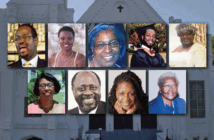How does a pastor gain a congregation’s trust? How does a pastor warrant their respect? These are lessons I have learned through my own experiences with pastoral transitions.
For the first year or so of ministry, the priority must lie in being active in the life of the church by being present and actively engaging in developing this new relationship.
Presence
As a pastor becomes a part of the congregation, the pastor must guard his or her schedule to make time for congregants. The community will call, denominational loyalties will call, but for the first year or so of ministry, the priority must lie in being active in the life of the church by being present and actively engaging in developing this new relationship. This may mean that there will be an imbalance during that first year as the pastor focuses on building a relationship with the congregation. The pastor has to schedule time to be with members; visit the older saints; conduct funerals, weddings, and baptisms; offer counseling; touch the people before and after worship. This is intense relationship work that can’t be done if the pastor is absent. This is emotional work that takes time and energy. There are no short-cuts; there are no substitutions for the pastor’s consistent and engaged presence.
Preaching and Worship
New pastors must make preaching a priority. A key role of the shepherd of any flock is feeding the flock. The new pastor should be the lead preacher and should have the right to decide who preaches and when. During that first year, the new pastor needs to preach as many Sundays as he or she can handle. As the pastor makes preaching a priority, the congregation must give him or her time to prepare. Study and preparation are critical to quality preaching. The pastor who is overbooked and doesn’t have time to prepare will not be able to preach effectively. In the African American tradition, preaching is central to the role and duties of our pastors. We expect a well-prepared word and a word that is delivered well.
Teaching
New pastors must take time to teach God’s Word outside of the Sunday worship experience. The weekly Bible study is not just about the Word of God; it is also about relationships. Bible study tends to be a much smaller group than most churches see on Sunday. It is a time for the pastor to touch the people outside the pressures of Sunday and get to know them. This act of relationship-building leads to the new pastor caring for the people, praying with them, visiting them, and walking with them through their good times and bad times. In addition to Bible study, the pastor can also think about other teaching moments. Pastors can visit choir rehearsals and ministry meetings and share a word.
Pastoral Care
During that first year, the relationship between the pastor and the congregation will intensify through intentional acts of love manifested via pastoral care. Pastoral care is simply caring for the people: calling and seeing about the people in times of tragedy, celebrating with the people in times of joy. New pastors have to show the congregation that they care. It is one thing for a pastor to have a good heart and quite another for that pastor to let folk know he or she loves them. When a congregation knows that their new pastor loves them, and that pastor has shown that love through tangible acts of caring, it will go a long way in moving the transition along. The new pastor has to remember that what makes the former pastor’s legacy so long is relationship.
Organization and Administration
The new pastor must be brought up to speed on where the organizational structure of the church is and where it is going. People are looking to the pastor to lead and order the church. A new pastor must first know what was and what is, and then must decide with his or her leaders what ought to be. A good administrator is not birthed, but rather is made by paying attention to what is going on, seeking answers to questions, and sharing leadership with knowledgeable people who can cover the new pastor’s weaknesses and make the work of the ministry happen. The new pastor has to balance the administrative task of the church in such a way that it points the church toward its future.
Leave the Old Church Behind
New church pastors must accept that they are not the pastor at the old church anymore. A minister can’t pastor two churches. The new pastor has to pour his or her energies into the new congregation. Let the old church go. Don’t take calls or entertain complaints about the successor. Don’t go back and do funerals. At some point, the new pastor needs to walk with the members through times of grief as part of pastoral care. The principle here is simple: move on, and let the people go, and help them move on. A pastor can’t move on and the former congregation can’t move on if the pastor doesn’t move out.
This article is adapted from Leading Your African American Church through Pastoral Transition by Dr. Watkins, copyright © 2010 by Judson Press. Used by permission of Judson Press and available from Amazon and Cokesbury.com







